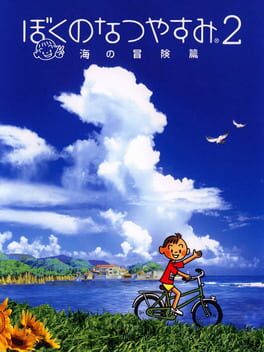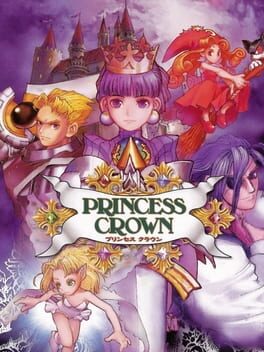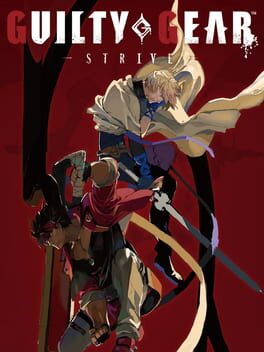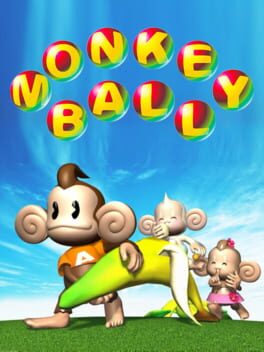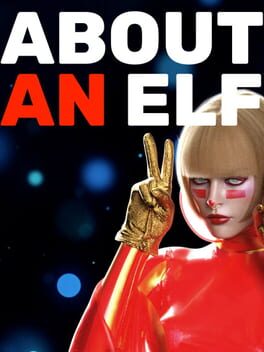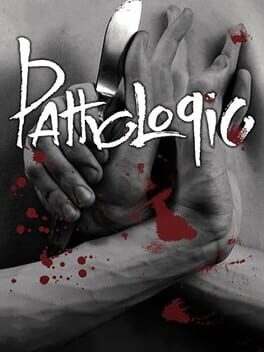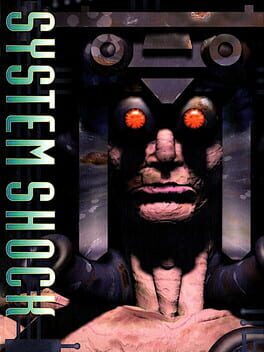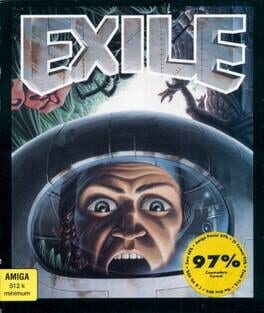sireconcis186
54 reviews liked by sireconcis186
To be honest, I didn't exactly come in with my arms wide open. The fears of a formally continuist sequel of something that was very expressive because its own peculiar use of its forms increased shortly after starting. A setting to choose how long you want the day to be, collectibles around the map, a character that tells you where to see the events of each day, afraid of giving you back freedom in a larger world, overall details that seem treated with less care and a feeling of experiencing the same but worse. It's a shame that every time the game tries to awkwardly recall the intentions of its predecessor, it pales considerably (one clear instance: the previously essential narrator is now dispensable in the few arbitrary moments it appears).
Luckily, it takes just a few days to see that the direction taken is right. The facts that the protagonist's father never appears, that the plot of the future sibling remains in the background, or that the reminiscing aspect of the tale is anecdotic are no coincidence. The form, weighed down by losing part of its meaning, becomes a perfect vehicle to explore a more passive exploration of the surrounding drama.
Here Boku does not so much embody a reflexive portrait of childhood and growth, as he is more a supporting device for the rest of the cast. Accordingly, the most dramatically charged plots revolve less around Boku's family and more around the neighbors and visitors. These take advantage of the kid's innocent and outsider approach to deal with a common yet always specific issue: yearn. Yearn because of the distance between mother and daughter, between father and son, between lovers, between Earth and outer space, between past and present and future, between the world of humans and the one that is not ours, between life and what lies beyond. And the fears that all of these yearnings may never be answered.
That most of the conflicts end up in an open ended bittersweet quiet note resonates with the setting of the small coastal village. A place to get away from and to be taken away from the world. The ever-present sound of the waves, which inevitably move these desires in the tide just as the moon changes phase in the last shot of each day.
It’s not that Boku's appearance solves all these yearnings, but his mere interest in observing the world around him and serving as a confessional escape mechanism at least alleviates the pain. The game takes a passive stance where listening to one another is the greatest act of kindness, where what little evil appears to exist in the world has nothing but a noble and melancholic origin. Who knows what the future may hold, what to do but to hope for the best and reach for our hands within the tide.
Luckily, it takes just a few days to see that the direction taken is right. The facts that the protagonist's father never appears, that the plot of the future sibling remains in the background, or that the reminiscing aspect of the tale is anecdotic are no coincidence. The form, weighed down by losing part of its meaning, becomes a perfect vehicle to explore a more passive exploration of the surrounding drama.
Here Boku does not so much embody a reflexive portrait of childhood and growth, as he is more a supporting device for the rest of the cast. Accordingly, the most dramatically charged plots revolve less around Boku's family and more around the neighbors and visitors. These take advantage of the kid's innocent and outsider approach to deal with a common yet always specific issue: yearn. Yearn because of the distance between mother and daughter, between father and son, between lovers, between Earth and outer space, between past and present and future, between the world of humans and the one that is not ours, between life and what lies beyond. And the fears that all of these yearnings may never be answered.
That most of the conflicts end up in an open ended bittersweet quiet note resonates with the setting of the small coastal village. A place to get away from and to be taken away from the world. The ever-present sound of the waves, which inevitably move these desires in the tide just as the moon changes phase in the last shot of each day.
It’s not that Boku's appearance solves all these yearnings, but his mere interest in observing the world around him and serving as a confessional escape mechanism at least alleviates the pain. The game takes a passive stance where listening to one another is the greatest act of kindness, where what little evil appears to exist in the world has nothing but a noble and melancholic origin. Who knows what the future may hold, what to do but to hope for the best and reach for our hands within the tide.
Super Mario Sunshine
2002
I finally did muster through Super Mario Sunshine after about three and a half years of leaving it on the backburner, and I must say I still don't get it. It's not all bad but it's like, not very fun to me at all. I found its best moments to be pretty decent, and put up against Super Mario 64 and Super Mario Galaxy I don't really think it stands a chance in most if not all fields. I did not gel with the aesthetic, controls, or level design nearly as much as in either of them.
The biggest thing that irks me about Sunshine, though, is it doesn't feel as open as it lets on. You can beat the game with a minimum of 50 shines (I completed it with 53), but rather than a basic threshold to close off the final level, like how you can get any 70 stars in 64 to reach the end, you are required to do all the first seven missions of each level. In order, too. You can't go out of order like you can in 64, you have to do mission 1, then mission 2, etc. This works fine in Galaxy because the level design reflects it better, it's already more linear to begin with in its design and progression. Sunshine's level design does not reflect its linearity, it presents itself as a lot more open and implies a lot more freedom than you're actually provided. The end result takes away the feeling of free exploration, and it begins to feel more like crossing off a checklist than finding things yourself and reaping the rewards for doing so. Some of these required missions are frankly quite awful as well. A few of the bosses (Petey Piranha 2, Manta) are super tedious and slow, and some other missions littered around are bordering on unacceptable. I could not locate any enjoyment to be found in the "chuckster" mission, for example, and there's just no way to get around it without enduring it. If you have a star in 64 you really hate, chances are you can just work around it, but such is not the case this time.
I figure you can warm up to this with enough playthroughs, but the first is deeply unsatisfying and unrewarding. A competently made and designed game for the most part, but mundane and unenjoyable especially in comparison to the high points surrounding it in the series. Why would I want to play it some more in order to warm up to it if the first playthrough was so consistently rough? How often do you want to replay something you thought was lame, especially with people breathing down your neck about how you're wrong? I dunno, man. It just doesn't really make sense to me. I really see now why this seems to be the most divisive of the 3D Mario entries, and try as I might to enjoy myself during its runtime, I can't seem to do so often enough to really call it something I like as an overall experience. I'm just glad I at least have it off my back now.
The biggest thing that irks me about Sunshine, though, is it doesn't feel as open as it lets on. You can beat the game with a minimum of 50 shines (I completed it with 53), but rather than a basic threshold to close off the final level, like how you can get any 70 stars in 64 to reach the end, you are required to do all the first seven missions of each level. In order, too. You can't go out of order like you can in 64, you have to do mission 1, then mission 2, etc. This works fine in Galaxy because the level design reflects it better, it's already more linear to begin with in its design and progression. Sunshine's level design does not reflect its linearity, it presents itself as a lot more open and implies a lot more freedom than you're actually provided. The end result takes away the feeling of free exploration, and it begins to feel more like crossing off a checklist than finding things yourself and reaping the rewards for doing so. Some of these required missions are frankly quite awful as well. A few of the bosses (Petey Piranha 2, Manta) are super tedious and slow, and some other missions littered around are bordering on unacceptable. I could not locate any enjoyment to be found in the "chuckster" mission, for example, and there's just no way to get around it without enduring it. If you have a star in 64 you really hate, chances are you can just work around it, but such is not the case this time.
I figure you can warm up to this with enough playthroughs, but the first is deeply unsatisfying and unrewarding. A competently made and designed game for the most part, but mundane and unenjoyable especially in comparison to the high points surrounding it in the series. Why would I want to play it some more in order to warm up to it if the first playthrough was so consistently rough? How often do you want to replay something you thought was lame, especially with people breathing down your neck about how you're wrong? I dunno, man. It just doesn't really make sense to me. I really see now why this seems to be the most divisive of the 3D Mario entries, and try as I might to enjoy myself during its runtime, I can't seem to do so often enough to really call it something I like as an overall experience. I'm just glad I at least have it off my back now.
Princess Crown
1997
Guilty Gear: Strive
2021
I find it kinda hard to put my own opinion on Strive in an interesting way. I’d say “it's an alright but janky not-anime-fighter” with some wack mechanics and occasionally cool kits. I see it as the kind of game that won’t be many people’s favorite due to how many compromises it makes in the attempt to be accessible and expansive at the same time, pulling mechanics from all across fighting game sub-genres to do a little bit of everything. It’s far more interesting for me to think about what it represents culturally and what the game is trying to do with the FGC.
When the game was first revealed as the unnamed new Guilty Gear, it’s creator said in an interview that the game was meant to be a “bridge that connects people”. I took it as a corny exaggeration that's just meant to communicate that “its an accessible fighter”, but a couple months from launch now, I see how much the devs really tried to make true on that message and how much the game, in spite of its rocky launch and somewhat negative perception, managed to succeed at it.
Since its launch, Strive has been the talk of town for the FGC in a way that extends beyond the fad of a new release. Look at major tournaments and you will find the players that are pros and legends from across different fighting games. I never thought I’d see the Zangief legend “SnakeEyez” go toe-to-toe with Guilty Gear vets and Marvel players, transferring all his SF grappler experience into Potemkin and taking advantage of the GG systems in ways I haven’t seen GG players do, but here we are. Within my personal circle I saw friends who had always been waiting for a fighting game to break into and this game finally became the one to get them to feel competent and comfortable with the genre, and people who never ventured outside their niche of Tekken or Street Fighter gaining a taste for new gameplay styles through this game. Daisuke wasn’t talking out of his ass after all.
It’s main virtue is having a combo of elements that makes it easy to introduce to most people without having to put asterisks, which somehow no FG has managed to do in the past decade. These are:
A. Look Pretty
B. Have Good Netcode
C. Be Easy To Pick Up
And
D. Have A Playerbase.
No fighter in the last decade has managed to get all of these right to achieve proper flagship status. If you have good netcode you’re probably an inaccessible anime fighter or something on fightcade, you also don’t have a playerbase. If you have a playerbase you’re probably Tekken, Street Fighter, or DBFZ, which all have their own set of problems that stop them from being a flagship for the community. Strive did have terrible SFV-esque server issues on launch and still suffers from its lobby system which I think is the only place where it fucked up in this department of approachability, but otherwise these elements make it an easy game to get someone into as it won't be difficult for them to learn, they will be able to play against you regardless of regional distance, and they will have an ample playerbase and an active community to work with.
The other way in which Strive tries to bridge people is in its mechanics, and that’s where the game gets a little contentious. It prioritizes presenting a large variety of scenarios and archetypes in easy to understand ways, using high damage for strong feedback. Knowledge and execution walls are made much smaller and this comes at the price of much of what people liked about the older games. Stuff like every character being designed to only need to learn one easy BnB to execute their gameplan, and slowdown on counter hits to let anyone hit confirm, go a long way to allowing anyone to get to competency fairly quickly, but those who wanted their lab playground won’t get it here.
Changes are made to make its neutral and offense more Street Fighter like while keeping a distinctly Guilty Gear defense. A slower airdash encourages more grounded play without eliminating air footsies, the redesigned gatling system seeks to emulate SF’s risk/reward structure while keeping anime delay cancel pressure, and initially the game seemed to take cues from SFV in the lack of chip kills before that was patched out. The changes to its character kits lead to a lot less high/low or left/right and a lot more hit/throw which is a far simpler mixup to understand, execute, and defend against. Despite that, defense still focuses on up-back air blocking, using FD and meter correctly,
The experimental ways in which it tries to bridge SF and GG’s gameplay styles lead to a lot of jank. The unintuitive nature of its new gatling system receives flak for good reason, its airdash feels much worse than anything you played before, and the design philosophy seems a bit all over the place with how some hitboxes and kits are designed, leading to large power disparities like Sol vs Ky which feels like a barely toned down Guilty Gear character fighting a mediocre Street Fighter character.
The game’s throw is probably the most problematic result to me, with SFV-esque high reward and range but anime-style fast startup that beats normals. Usually fast/strong throws are incredibly short ranged but Strive is the only game I know that doesn’t do this, and combined with its character kits and the fact that throws put you in counter state on whiff, lead the game to a highly volatile throw-based meta that focuses on static 50/50s far too often. I find it hard to look at the game’s current state without feeling that it needed another pass of mechanical polish before launch.
Some changes are, however, more generally enjoyed: universal wake up timings, character weights that don't affect combos as drastically, and mapping multiple mechanics to the Roman Cancel input to have them activate depending on context instead of using unique inputs for context sensitive moves like in previous games (e.g Dead Angle).
RC mechanics are, in general, where the game almost succeeds at having its cake and eating it too. The creators claimed that they wanted to make things easier to understand yet “retain the depth” somehow, and there are some really admirable attempts where nuance is added in inventive ways that make things easier while also deeper.
The new Red-RC allows players to convert off of any attack with ease and use the staple mechanic for its intended purpose without grinding conversions from every possible situation. A new drift system that gives RCs new neutral, mixup, and combo possibilities, and the ability to cancel the slowdown to RCs allows players to have both Xrd RCs and +R style fast RCs.
These new systems are highly praised for a good reason, but a common criticism of it is that game locks too much of its depth behind a metered mechanic (in a game where you can only hold two stocks of meter at most too), meaning that the times you can be creative and crazy in the way old Guilty Gear used to be are limited to but a few instances per game. However, this criticism is probably seen as a success by the devs when thinking about it from their “bridge” point of view. The game lets you play with more classic neutral and mixup structures, but the RC system gives you a lens into more complex movements akin to crazier anime fighters. It allows you to taste the potential depth without having it take over the game and turn it into something too unorthodox and based around RC gimmicks.
This general philosophy is why I think that even when this game is all patched and polished up, it likely won’t stick as anyone’s favorite fighter, as it constantly refuses to indulge in a strong niche. I like my specialized games that revel in their niche, and overall have never been a big fan of Guilty Gear’s lab-heavy execution wall and oki focused gameplans, so I thought I personally wouldn’t get much out of Strive.
However, they succeeded at appealing to me with the design of Zato. I think he is one of the few cases in this game of a character that actually managed to retain his depth while also becoming easier, and they did not do this through removing mechanics, but instead opted to add new ones on top of the existing template.
Clap cancels and redesigned summon moves allow Zato insane possibilities he didn’t even dream of before, while simultaneously making him easier to pick up. But they did not, as most predicted before release, opt to remove his old mechanic, and thus allowed you to layer his classic Negative Edge mechanic on top of the additions, giving the character a really satisfying learning curve. He avoids most of the issues I would have with Strive, and instead souped up and more powerful compared to his previous iterations without requiring the massive labtime requirement that old Zato used to have.
I imagine many people had that experience I had with Zato with some other character that they always wanted to play but never could get through because of the lab-time barrier required in the past games. And while I think the way Zato did this is great, most characters aren't flexible enough for this kind of design. Millia stands as a stark example to me, a character who’s difficult multi-layered disc mixup has been made easy to execute and heavily directed by adding a forced jump after her disc, which comes at the cost of anyone who thought “what if I didn’t wanted to do a left/right mixup after disc?”, gutting much of the character’s interplayer variety.
That aside, much of my positive outlook on this game comes from what it did to the community and the potential it has as the devs continue to foster its growth and polish its mechanics. If you are already comfortable within your niche of fighting games and are having a good time playing with your group of friends without the want for a larger playerbase, there is probably not much for you in Strive, and I think I would almost be the same.
But I do like the playerbase, I do like having this game that I can use to introduce people to the genre, or to get existing FG friends to get a taste of new gameplay styles they never considered before. Even if I don’t think it’s a very good FG for my tastes, and would usually groan at ceaseless simplification of the genre, I highly respect what this game strived to achieve (heh) and I am very glad it exists.
When the game was first revealed as the unnamed new Guilty Gear, it’s creator said in an interview that the game was meant to be a “bridge that connects people”. I took it as a corny exaggeration that's just meant to communicate that “its an accessible fighter”, but a couple months from launch now, I see how much the devs really tried to make true on that message and how much the game, in spite of its rocky launch and somewhat negative perception, managed to succeed at it.
Since its launch, Strive has been the talk of town for the FGC in a way that extends beyond the fad of a new release. Look at major tournaments and you will find the players that are pros and legends from across different fighting games. I never thought I’d see the Zangief legend “SnakeEyez” go toe-to-toe with Guilty Gear vets and Marvel players, transferring all his SF grappler experience into Potemkin and taking advantage of the GG systems in ways I haven’t seen GG players do, but here we are. Within my personal circle I saw friends who had always been waiting for a fighting game to break into and this game finally became the one to get them to feel competent and comfortable with the genre, and people who never ventured outside their niche of Tekken or Street Fighter gaining a taste for new gameplay styles through this game. Daisuke wasn’t talking out of his ass after all.
It’s main virtue is having a combo of elements that makes it easy to introduce to most people without having to put asterisks, which somehow no FG has managed to do in the past decade. These are:
A. Look Pretty
B. Have Good Netcode
C. Be Easy To Pick Up
And
D. Have A Playerbase.
No fighter in the last decade has managed to get all of these right to achieve proper flagship status. If you have good netcode you’re probably an inaccessible anime fighter or something on fightcade, you also don’t have a playerbase. If you have a playerbase you’re probably Tekken, Street Fighter, or DBFZ, which all have their own set of problems that stop them from being a flagship for the community. Strive did have terrible SFV-esque server issues on launch and still suffers from its lobby system which I think is the only place where it fucked up in this department of approachability, but otherwise these elements make it an easy game to get someone into as it won't be difficult for them to learn, they will be able to play against you regardless of regional distance, and they will have an ample playerbase and an active community to work with.
The other way in which Strive tries to bridge people is in its mechanics, and that’s where the game gets a little contentious. It prioritizes presenting a large variety of scenarios and archetypes in easy to understand ways, using high damage for strong feedback. Knowledge and execution walls are made much smaller and this comes at the price of much of what people liked about the older games. Stuff like every character being designed to only need to learn one easy BnB to execute their gameplan, and slowdown on counter hits to let anyone hit confirm, go a long way to allowing anyone to get to competency fairly quickly, but those who wanted their lab playground won’t get it here.
Changes are made to make its neutral and offense more Street Fighter like while keeping a distinctly Guilty Gear defense. A slower airdash encourages more grounded play without eliminating air footsies, the redesigned gatling system seeks to emulate SF’s risk/reward structure while keeping anime delay cancel pressure, and initially the game seemed to take cues from SFV in the lack of chip kills before that was patched out. The changes to its character kits lead to a lot less high/low or left/right and a lot more hit/throw which is a far simpler mixup to understand, execute, and defend against. Despite that, defense still focuses on up-back air blocking, using FD and meter correctly,
The experimental ways in which it tries to bridge SF and GG’s gameplay styles lead to a lot of jank. The unintuitive nature of its new gatling system receives flak for good reason, its airdash feels much worse than anything you played before, and the design philosophy seems a bit all over the place with how some hitboxes and kits are designed, leading to large power disparities like Sol vs Ky which feels like a barely toned down Guilty Gear character fighting a mediocre Street Fighter character.
The game’s throw is probably the most problematic result to me, with SFV-esque high reward and range but anime-style fast startup that beats normals. Usually fast/strong throws are incredibly short ranged but Strive is the only game I know that doesn’t do this, and combined with its character kits and the fact that throws put you in counter state on whiff, lead the game to a highly volatile throw-based meta that focuses on static 50/50s far too often. I find it hard to look at the game’s current state without feeling that it needed another pass of mechanical polish before launch.
Some changes are, however, more generally enjoyed: universal wake up timings, character weights that don't affect combos as drastically, and mapping multiple mechanics to the Roman Cancel input to have them activate depending on context instead of using unique inputs for context sensitive moves like in previous games (e.g Dead Angle).
RC mechanics are, in general, where the game almost succeeds at having its cake and eating it too. The creators claimed that they wanted to make things easier to understand yet “retain the depth” somehow, and there are some really admirable attempts where nuance is added in inventive ways that make things easier while also deeper.
The new Red-RC allows players to convert off of any attack with ease and use the staple mechanic for its intended purpose without grinding conversions from every possible situation. A new drift system that gives RCs new neutral, mixup, and combo possibilities, and the ability to cancel the slowdown to RCs allows players to have both Xrd RCs and +R style fast RCs.
These new systems are highly praised for a good reason, but a common criticism of it is that game locks too much of its depth behind a metered mechanic (in a game where you can only hold two stocks of meter at most too), meaning that the times you can be creative and crazy in the way old Guilty Gear used to be are limited to but a few instances per game. However, this criticism is probably seen as a success by the devs when thinking about it from their “bridge” point of view. The game lets you play with more classic neutral and mixup structures, but the RC system gives you a lens into more complex movements akin to crazier anime fighters. It allows you to taste the potential depth without having it take over the game and turn it into something too unorthodox and based around RC gimmicks.
This general philosophy is why I think that even when this game is all patched and polished up, it likely won’t stick as anyone’s favorite fighter, as it constantly refuses to indulge in a strong niche. I like my specialized games that revel in their niche, and overall have never been a big fan of Guilty Gear’s lab-heavy execution wall and oki focused gameplans, so I thought I personally wouldn’t get much out of Strive.
However, they succeeded at appealing to me with the design of Zato. I think he is one of the few cases in this game of a character that actually managed to retain his depth while also becoming easier, and they did not do this through removing mechanics, but instead opted to add new ones on top of the existing template.
Clap cancels and redesigned summon moves allow Zato insane possibilities he didn’t even dream of before, while simultaneously making him easier to pick up. But they did not, as most predicted before release, opt to remove his old mechanic, and thus allowed you to layer his classic Negative Edge mechanic on top of the additions, giving the character a really satisfying learning curve. He avoids most of the issues I would have with Strive, and instead souped up and more powerful compared to his previous iterations without requiring the massive labtime requirement that old Zato used to have.
I imagine many people had that experience I had with Zato with some other character that they always wanted to play but never could get through because of the lab-time barrier required in the past games. And while I think the way Zato did this is great, most characters aren't flexible enough for this kind of design. Millia stands as a stark example to me, a character who’s difficult multi-layered disc mixup has been made easy to execute and heavily directed by adding a forced jump after her disc, which comes at the cost of anyone who thought “what if I didn’t wanted to do a left/right mixup after disc?”, gutting much of the character’s interplayer variety.
That aside, much of my positive outlook on this game comes from what it did to the community and the potential it has as the devs continue to foster its growth and polish its mechanics. If you are already comfortable within your niche of fighting games and are having a good time playing with your group of friends without the want for a larger playerbase, there is probably not much for you in Strive, and I think I would almost be the same.
But I do like the playerbase, I do like having this game that I can use to introduce people to the genre, or to get existing FG friends to get a taste of new gameplay styles they never considered before. Even if I don’t think it’s a very good FG for my tastes, and would usually groan at ceaseless simplification of the genre, I highly respect what this game strived to achieve (heh) and I am very glad it exists.
Guilty Gear: Strive
2021
being an axl main is awesome. everyone hates you and routinely skips past playing you for the simple crime of forcing them to play a bit of neutral. you prevent them from running their twenty second lockdown pressure drills for a bit and it’s the end of the world; they’d much rather go up against the litany of other rushdown characters who can all do that or the guy that can eat your healthbar in three decisions.
the game is fine. as far as its pace is concerned, strive is essentially rocket tag, and that’s a fine thing to enjoy. it just comes at the obviously infamous cost of representing a departure from xrd (or prior entries but i won’t pretend to be knowledgeable in this arena). this has invited natural comparisons to street fighter (super turbo in particular) and samurai shodown, but i think the core system mechanics manage to carve their own niche within the high damage subgenre. for all the debate around simplification, it seems clear to me that arcsys’s goal was to create a fighting game that the majority of people familiar with the genre can learn simply through relevant match experience, avoiding the confines of the training room and bringing the title in line with an older arcade experience. again, totally fine thing to be. i do think i prefer xrd’s brand of bullshit but not because it’s inherently more cerebral or anything - matches just tend to feel more dynamic. it’s an instance where strives emphasis on creatively using meter’s hundreds of applicable permutations to open holes in opponents defense is somewhat negated by the lack of opportunities to tap in per round and by how viciously quick some of these rounds can close out.
i strongly dislike the menus, user interface, and lobby system, but this aside it’s curious to me that strive represents an artistic departure from the rest of the series as well and this aspect has mostly been swept under the rug by the community. i assume this is fine for most because it’s pretty and because we will never escape the fondness gamers have for the metal gear rising/anarchy reigns soundtrack. still, its very much an intentional continuation of xrds aesthetic sensibilities - understandable given that titles landmark reception - but it feels worth mentioning that we are at this point quite far removed from the grungy, muted, and punk tone of earlier entries. but giovannas hot so who can say whether this is bad or not
the game is fine. as far as its pace is concerned, strive is essentially rocket tag, and that’s a fine thing to enjoy. it just comes at the obviously infamous cost of representing a departure from xrd (or prior entries but i won’t pretend to be knowledgeable in this arena). this has invited natural comparisons to street fighter (super turbo in particular) and samurai shodown, but i think the core system mechanics manage to carve their own niche within the high damage subgenre. for all the debate around simplification, it seems clear to me that arcsys’s goal was to create a fighting game that the majority of people familiar with the genre can learn simply through relevant match experience, avoiding the confines of the training room and bringing the title in line with an older arcade experience. again, totally fine thing to be. i do think i prefer xrd’s brand of bullshit but not because it’s inherently more cerebral or anything - matches just tend to feel more dynamic. it’s an instance where strives emphasis on creatively using meter’s hundreds of applicable permutations to open holes in opponents defense is somewhat negated by the lack of opportunities to tap in per round and by how viciously quick some of these rounds can close out.
i strongly dislike the menus, user interface, and lobby system, but this aside it’s curious to me that strive represents an artistic departure from the rest of the series as well and this aspect has mostly been swept under the rug by the community. i assume this is fine for most because it’s pretty and because we will never escape the fondness gamers have for the metal gear rising/anarchy reigns soundtrack. still, its very much an intentional continuation of xrds aesthetic sensibilities - understandable given that titles landmark reception - but it feels worth mentioning that we are at this point quite far removed from the grungy, muted, and punk tone of earlier entries. but giovannas hot so who can say whether this is bad or not
Super Mario World
1990
Despite still being a much debated topic among gamers, I'm fairly certain that many here would agree with the notion that gameplay isn't necessarily the end all be all core of a videogame that validates it in the eyes of its critics, with many well renowned beloved classics owing a fair deal of their reputation and prestige to their presentation and art style, in some cases exclusively so. It's a fine line between the legwork a videogame's interactivity does and the heavy lifting its audiovisual design achieves, some works being so successful in that tug of war that they are able to ride on the coattails of their aesthetic alone. Does El Shaddai pull it off?
Sort of. It's an inspired visual kaleidoscope of arresting fantastical landscapes that reinterpret ancient hebrew religious text depicting the kingdom of the fallen angels who caused the Great Flood through cel shaded watercolored vignettes and bright vivid shades that still stand the test of time. My issues with El Shaddai however rest in its ability to use its biggest strength to communicate the imagery and themes of the source material it tries to interpret.
Putting aside the serviceable combat mechanics that are the bulk of the gameplay experience and reach their apex short of the halfway point, El Shaddai struggles with keeping the player invested in its storyline, hoping that its visual splendor suffices. The disparate tonal shifts, lackluster cast and off the wall liberties the game indulges on, while leading to some successful endeavours like the fantastic rendition of Azazel's domain in Chapter 6, more often than not end up with vacuous and dry shallow confrontations that fail to explore and engage with the text besides superficial tracing of it.
A videogame doesn't necessarily need gameplay, but it's not enough to just be beautiful. In contrast to Okami's reverence for the Shinto religion, El Shaddai is not able to convey the power, majesty and beauty of the imagery it apes from, despite how grandiose and colorful it wants you to see it as. Still, El Shaddai is a curious oddity that baffingly got greenlit during the 7th gen of consoles, and the acid trip is more than worth the price of admission. But you can sort of understand why it never turned into an ICO or a Rez in its proceeding years.
Sort of. It's an inspired visual kaleidoscope of arresting fantastical landscapes that reinterpret ancient hebrew religious text depicting the kingdom of the fallen angels who caused the Great Flood through cel shaded watercolored vignettes and bright vivid shades that still stand the test of time. My issues with El Shaddai however rest in its ability to use its biggest strength to communicate the imagery and themes of the source material it tries to interpret.
Putting aside the serviceable combat mechanics that are the bulk of the gameplay experience and reach their apex short of the halfway point, El Shaddai struggles with keeping the player invested in its storyline, hoping that its visual splendor suffices. The disparate tonal shifts, lackluster cast and off the wall liberties the game indulges on, while leading to some successful endeavours like the fantastic rendition of Azazel's domain in Chapter 6, more often than not end up with vacuous and dry shallow confrontations that fail to explore and engage with the text besides superficial tracing of it.
A videogame doesn't necessarily need gameplay, but it's not enough to just be beautiful. In contrast to Okami's reverence for the Shinto religion, El Shaddai is not able to convey the power, majesty and beauty of the imagery it apes from, despite how grandiose and colorful it wants you to see it as. Still, El Shaddai is a curious oddity that baffingly got greenlit during the 7th gen of consoles, and the acid trip is more than worth the price of admission. But you can sort of understand why it never turned into an ICO or a Rez in its proceeding years.
Monkey Ball
2001
About an Elf
2022
You're here, man. If you're reading this, you're here with us weirdos talking about a weird game for weirdos. Now that you're here and all the doors are mysteriously locked I have but one question for you: What if one of those Xbox 360 Live Arcade games featuring 3D porn models doing weird shit was good enough to play all the way through? About an Elf is your answer.
First of all, watch this 20 second clip of the game and however you feel about it will 100% be how you feel about the game in it's entirety.
About an Elf is a mostly a visual novel style game, but there are small bits of gameplay and your dialogue choices that affect certain outcomes but it's not really that deep. This game is primarily an incoherent trip you're meant to glide through that truly remind me of indie games from the 90's with it's mix of incoherence and visual splendor.
To better explain, the dialogue reminds me of a dude in my old social circle who was a theater kid that brought lean to every party he was invited to and would talk in sentences that sounded like he was reading a thesaurus for assholes. That's right Logan, shoebox moon pie taurus oblongotta. Go play Project M with the others, I'm busy trying to hit on art hoes by pretending to be into Renaissance-era French architecture.
It isn't an exaggeration or me giving up trying to explain the vibe of About an Elf by saying this all comes off like a fever dream. You'll find yourself having mundane conversations with a 10 foot cat named Roland -- or having unearned meta conversations with a character that looks like the main character but with different hair and clothes. There's some pure cringe dialogue here, but the way the dialogue is presented by absurdly high rendered models in nice space backdrops while reggaeton beats are playing at nearly all times; all mostly really works in establishing a very unique identity I was charmed by.
If you are the type who plays weird shit for weird shit sake, here is something new for you. It's only on Switch tho, with no PC port at all. I suggest giving the devs money with an eShop purchase but emulating this if you only have PC is worth the effort.
First of all, watch this 20 second clip of the game and however you feel about it will 100% be how you feel about the game in it's entirety.
About an Elf is a mostly a visual novel style game, but there are small bits of gameplay and your dialogue choices that affect certain outcomes but it's not really that deep. This game is primarily an incoherent trip you're meant to glide through that truly remind me of indie games from the 90's with it's mix of incoherence and visual splendor.
To better explain, the dialogue reminds me of a dude in my old social circle who was a theater kid that brought lean to every party he was invited to and would talk in sentences that sounded like he was reading a thesaurus for assholes. That's right Logan, shoebox moon pie taurus oblongotta. Go play Project M with the others, I'm busy trying to hit on art hoes by pretending to be into Renaissance-era French architecture.
It isn't an exaggeration or me giving up trying to explain the vibe of About an Elf by saying this all comes off like a fever dream. You'll find yourself having mundane conversations with a 10 foot cat named Roland -- or having unearned meta conversations with a character that looks like the main character but with different hair and clothes. There's some pure cringe dialogue here, but the way the dialogue is presented by absurdly high rendered models in nice space backdrops while reggaeton beats are playing at nearly all times; all mostly really works in establishing a very unique identity I was charmed by.
If you are the type who plays weird shit for weird shit sake, here is something new for you. It's only on Switch tho, with no PC port at all. I suggest giving the devs money with an eShop purchase but emulating this if you only have PC is worth the effort.
